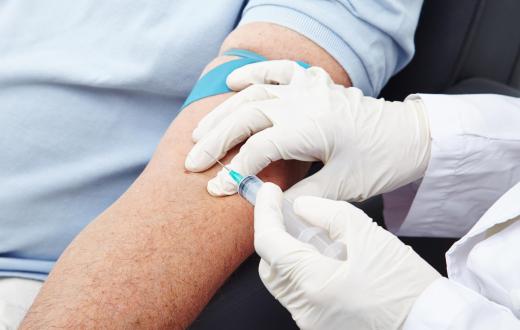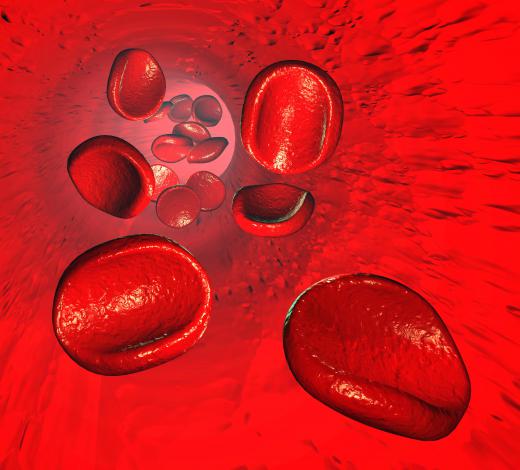What is Transferrin Saturation?
Transferrin saturation is a calculated value resulting from a medical laboratory test to measure the amount of iron bound to transferrin in the blood. The liver produces transferrin, which is a protein that serves to bind iron molecules and carry them through the bloodstream to the bone marrow.
Iron is an important component of the hemoglobin molecule present in red blood cells. Hemoglobin is made up of four polypeptide chains and each chain contains a heme group. Heme is a pigment and it contains an iron ion at the center. There are four heme molecules and four iron ions bound to the polypeptide chains of the hemoglobin molecule.

Each iron ion can bind to one oxygen molecule, making hemoglobin a carrier for four oxygen molecules. As oxygen is absorbed from the lungs, it attaches to these iron ions. The oxygen is then carried through the body via the red blood cells. As blood flows through capillaries, the oxygen is released from the iron ion and is absorbed into cells.
Red blood cells cannot grow and divide, and they deliver oxygen to tissues of the body for about four months before they begin to breakdown. Iron is released from the red blood cells, but it cannot freely circulate in the bloodstream. Transferrin picks up the iron ions and carries them back to the bone marrow to be recycled into new red blood cells.

If iron levels in the blood are too low, a patient may be suffering from anemia. Since the tissues of the body are not receiving enough oxygen, the patient may experience fatigue, weakness, and a pale skin color. High iron levels can mean that the patient may have a condition known as hemochromatosis. Accumulation of iron in tissues and organs can be damaging. If a medical professional suspects a patient has either anemia or an iron overload, a transferrin saturation test would be ordered.

Transferrin saturation is reported as a percentage of transferrin that is saturated with iron. Serum iron levels and total iron binding capacity (TIBC) are two tests done on the blood, and their results are used to calculate this value. A serum iron level in the range of 60-170 micrograms/deciliter (mcg/dL) or 10-30 micromoles/liter (umol/L) is considered normal. The TIBC refers to the amount of iron that would be needed to bind all of the transferrin in the blood.

Normal values of TIBC range from 240-450 mcg/dL (43-80.6 umol/L). The serum iron level divided by the total iron binding capacity multiplied by 100 gives a transferrin saturation level. Calculated percentages normally range from 15% to 50%. Patients with anemia would have a percentage that is low, while those patients with hemochromatosis would have a high value.
AS FEATURED ON:
AS FEATURED ON:















Discussion Comments
As a person with Porphyria Cutanea Tarda, I have found this article very helpful. Thank you.
Very helpful. Thanks!
Post your comments